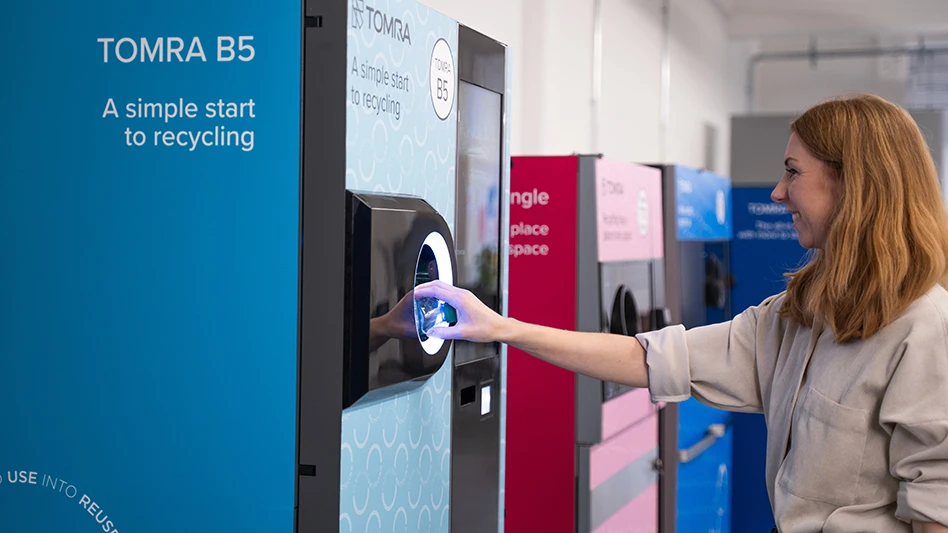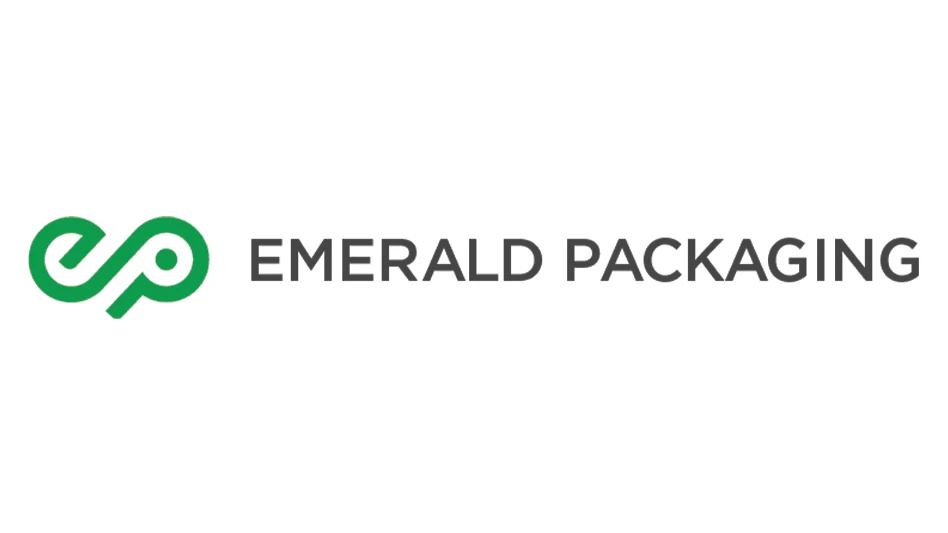Scrap dealers are turning to metal analyzers to maximize profit margins and to compete in an industry that is becoming increasingly sophisticated.
These instruments, available in either XRF (X-ray fluorescence) or OES (optical emissions spectrometer or arc/spark) versions, can help scrap recyclers make more appropriate offers at the scale house when buying material, and they can help minimize downgrades and rejections from steel mills and smelters when selling material. In addition, analyzers are capable of recording data from tests and uploading it to a personal computer, helping scrap dealers keep accurate records for each transaction.
AT THE SCALE HOUSE
Joel Fogle of Cohen Brothers Inc., Middletown, Ohio, uses a portable arc/spark unit, which he selected because of its ability to differentiate between classes of aluminum. "We use it for buying purposes and for upgrading materials in our yard for selling purposes," he says.
Mark Lessard, business development manager for Oxford Instruments, Boston, says that once a scrap dealer has determined an alloy based on the presence of the more expensive elements, such as nickel, titanium, cobalt and chrome, he can quickly determine what to pay for it. The XRF systems that Oxford manufactures, which employ a cold cathode digital X-ray tube, enable analysis in less than 10 seconds.
Don Sackett, president of Innov-X Systems Inc., Woburn, Mass., says, "Basically, the recycler is verifying that he’s buying the correct grade alloy, rather than taking the word of the supplier. In fact, we recently sold an analyzer right at the demo to a recycler who realized he was buying 304 stainless at Inco 800 prices." The variance in nickel content between the two metals is about 25 percent. "With nickel a couple bucks a pound, it only took about 25 tons to pay for the system," Sackett says.
Innov-X Systems manufactures a line of XRF analyzers, its flagship model being a handheld analyzer that uses an X-ray tube instead of radioactive isotopes.
"Of course, you’re going to be buying material to make a profit," Tom Anderson, director of marketing for Niton LLC, says. "If you know definitely what the material is, you can pay a more competitive price for it," Anderson, who is stationed in Niton’s West Coast office in Bend, Ore., says.
"For instance, the scrap dealer is going to be interested in the elements in the material itself, whether it’s a 316 stainless steel or a 304 stainless steel. A 316 is going to be a more valuable product, so you can afford to pay a little more for it because you have a higher profit margin on it," he says. "If somebody tells you they’ve got a load of 316, and you pay them based on that product, then you find out later that it’s a 304 that’s not worth the same amount of money, you’ve lost."
Niton is headquartered in Billerica, Mass., and manufactures a line of XRF analyzers.
John Patterson of Metorex, Ewing, N.J., says that analyzers can be used to check incoming loads for homogeneity fairly quickly and easily. Metorex manufactures a line of XRF and OES instruments.
"Identification by XRF is going to give you a very quick verification of an alloy grade, and it will prevent misgrading," Patterson says, noting that misgrading can cost scrap dealers money in terms of downgrades and rejections from mills and smelters.
INCREASING VALUE
Gregg Weiner, vice president of purchasing for secondary smelter Continental Aluminum, New Hudson, Mich., says, "We have a spectrometer here. We do take samples and analyze everything that comes in the door so that we can put it to our best, most efficient use when we melt material."
Random tests of incoming material help Continental to determine who its quality suppliers are. "As we test the material that comes in, if it is not what the dealer represents it as, it is subject to rejection or downgrade," Weiner says.
He adds that the downgrading or rejecting of material does not happen that often. "The dealers are doing a much better job of sorting and grading scrap than they used to," Weiner says. "I think it is so they can maximize the price that they are getting for their scrap. The industry has evolved and become more technical, so they have had to get more sophisticated in their sorting of scrap."
Anderson says, "The smelters and the consumers are using these instruments on their end. If you’re sure of what you’re sending them, you’re going to eliminate – minimize at least – any downgrades or rejections."
Lessard says that with an appropriate analyzer, scrap dealers "can make a guarantee and feel assured that they are going to live up to that guarantee."
If a scrap dealer sells a load of scrap metal, stainless steel for example, as a particular grade, but it is actually a load of mixed stainless material, the receiving mill will downgrade the shipment to the lowest price grade, Sackett says.
He adds, "Segregated loads always bring a higher price."
Anderson says, "You can’t sell mixed material for a premium." However, metals sorted by grade, particularly the higher price material, can be sold at a premium. "It also means that consumers won’t have to sort the material on their end," he adds.
| ADVANCING XRF TECHNOLOGY |
|
Manufacturers of metal analyzers continue to make technological improvements to their instruments resulting in faster units that cost less to maintain and to license, while delivering more detailed information. The major development in regard to XRF analyzers has been the movement away from radioisotopes toward X-ray tubes. Tom Anderson, director of marketing for Billerica, Mass.-based Niton LLC, says X-ray tubes provide many advantages over traditional radioisotopes. In addition to delivering more precise data in a shorter period of time, X-ray tubes do not require stringent licensing, unlike radioisotopes. "They require registration in most states, but not licensing," Anderson says. "Most of the companies producing this kind of instrumentation believe that X-ray tube devices are going to be the wave of the future because they enable you to produce higher levels of X-rays," Anderson says. "When the detector technology and electronics gets to the point where we can process the amount of information that we’re getting back, you’re going to have instruments that have phenomenal precision in just a matter of seconds. "Great strides are being made everyday in detector technology and electronics. The instruments that we introduced this past year are already 10 times faster than our previous instruments," Anderson says. However, he does acknowledge a draw back to X-ray tubes. "There’s not a service history on them, so as far as how long the X-ray tubes are going to last before they need to be replaced, nobody really has a clear idea on that," Anderson says. In bench-top instruments, X-ray tubes generally have lasted from three to five years, he says. "We don’t really know how that’s going to translate to portable instrumentation, because portable instrumentation takes more abuse than bench-top instrumentation does." Innov-X Systems Inc., Woburn, Mass., also manufactures a hand-held analyzer that uses an X-ray tube. Don Sackett, Innov-X president, says, "In the recycling industry throughput is crucial." X-ray tube systems allow for fast tests without slowing overtime, as there is no isotope decay. He adds, "There is not the regular isotope replacement costs of $2,500 to $5,000 every two years on average." Sackett says, "The elimination of a radioactive source is in itself a real advantage. Most recyclers are happy not to have to maintain radioactive materials safety programs." Ewing, N.J.-based Metorex’s X-MET 3000T also incorporates X-ray tube technology. According to company literature, grade identification of a sample can be obtained in two to five seconds or less, with full analysis taking 10 to 30 seconds. Mark Lessard, business development manager for Oxford Instruments, Boston, says the company has patented a cold cathode digital X-ray tube made from carbon nanotubes. "What that gets you is a very robust and reliable portable XRF analyzers as compared to analyzers that have traditional Tungsten filament X-ray tubes, which are as fragile as light bulbs." Lessard adds that accelerated life tests show the tubes last six years or more. For those not yet convinced of the durability of X-ray tubes, Niton offers an isotope-based system that uses the Infiniton source. "The nice thing about this source," Anderson says, "is that it never needs to be replaced, unlike the traditional cadmium source that’s been used." Anderson adds that instruments with the Infiniton source do require licensing, "as do the traditional isotope systems, but you don’t have the recurring maintenance costs every 15 months or two years, and it never slows down." |
VERIFYING STRICT CHEMISTRIES
Metal identification becomes more specific at the mill end. Aside from determining alloys, mills and smelters look at specific chemistries.
Patterson says, "Basically, the incoming inspection uses the analyzer to determine the chemistry of the alloys and thereby determine what the proper charge for the mill or a particular melt is."
At mills and smelters, analyzers primarily are used to verify the scrap metal that is going into a particular charge, Anderson says. "One thing that’s nice about the newer analyzers is that they are able to measure material at elevated temperatures, as high as 800 degrees Fahrenheit," he says. "You are able to get that quick result of a chill cast easily."
Weiner says that Continental Aluminum randomly samples material as it comes in and performs regular tests in the melting process.
"Analyzers are definitely an integral part of our testing because we have to make things to specification, and we have to be accurate to hundredths of percents because we supply the automotive and steel industries," Weiner adds.
"Obviously," Weiner says, "when we’re making specification ingot, we use an analyzer at various stages of the melting process to make additions to the furnace to make the product come out to fit the specifications. The dealers have already analyzed it and sorted it before the material comes to us," he adds. "We just verify their process. We then put it into the furnace where we an get the maximum benefit from the chemistry of the various aluminum alloys."
A REPUTATION FOR QUALITY
As an ISO-certified company, Cohen Brothers considers the analysis of incoming and outgoing shipments a necessity. "It kind of completes the loop, completes the process for us," Fogle says.
Cohen Brothers’ portable OES SpectroSort unit also has the ability to upload information to a personal computer. "It helps us to keep a record of prior tests. If there is a question as to what a material is or how we determined what it is, we can always go back through the system to find out what happened, where we tested or where we didn’t test," Fogle adds.
"With a portable X-ray [instrument] that can accurately determine the specific alloy grades and chemistry," Lessard says, "inaccuracies and out of specification material are eliminated. If you eliminate inaccuracies, and you’re always providing specification material, then your reputation will be very good.
Anderson says that a number of major scrap metal consumers keep tabs on scrap suppliers and employ grading systems. "Obviously, if a scrap yard is sending quality, sorted material to a consumer consistently, they are going to have a better reputation than if they have rejections or downgrades from that consumer," Anderson says. "Of course, people in this industry talk to each other as well. A scrap facility with a good reputation is going to be well known."
| DATA TRAIL |
|
Computers add to the capabilities of metal analyzers, helping with data storage and transfer. "The Innov-X alloy analyzer uses a pocket computer made by HP/Compaq for the software and computer platform," Don Sackett of Woburn, Mass.-based Innov-X, says. "Our customers love the flexibility of an off-the-shelf electronics package. They may add alloy grades, even elements and calibrations, without ever returning the system to the factory." This feature also helps the instrument avoid obsolescence. "When Intel or HP introduce a faster pocket computer, customers may simply buy one at their local store, pop in the flash card and be up and running," Sackett says. Mark Lessard of Oxford Instruments, Boston, says, "In order to do a good job, to get good numbers out of these instruments, you need some extensive methodology that requires a lot of memory." The PDA technology on Oxford instruments allows users to store and transfer data, as well as present and crunch data, he says. Ewing, N.J.-based Metorex produces the X-MET 3000T, which includes Windows CE based PMI (Positive Metals Identification) software with different analysis modes based on user needs: Grade ID, Quantitative Chemistries and Spectra Match with user library creation. "The PMI software, integrated operating on an NEC PDA, provides versatile analytical capabilities enabling the use of the analyzer in various segments of the metals world," according to Metorex literature. The Metorex ARC-MET 8000 Mobile Lab uses Windows NT software with easy and convenient user interfaces in the main unit and probe. According to company literature, the database reporting and information handling enable versatile remote diagnostics of measurement results. According to product literature, Niton’s XLi and XLt analyzers come standard with a suite of software tools. NITON’s PC-compatible NDT (NITON Data Transfer) software offers reporting functions, remote operation and automatic analytical calculation capabilities. |
Sackett says that a sure way for a scrap dealer to develop a reputation as a quality-driven organization is to provide the specified material. Verifying the alloys prior to shipment, he says, is the one way to assure the alloys are correctly sorted.
Lessard says he thinks there is evidence that as time goes on, more scrap dealers will purchase analyzers because the requirements for tight specifications will continue to grow. "With some of the electronic scrap found today, there are some very high dollar materials that need formal measurement or confirmation before they’re recycled," Lessard says. "Also, they are dealing on tight margins, so they need to know exactly what’s being delivered, so they know what to pay for it."
The author is assistant editor of Recycling Today and can be contacted via e-mail at dtoto@RecyclingToday.com.

Explore the November 2002 Issue
Check out more from this issue and find your next story to read.
Latest from Recycling Today
- ReMA urges open intra-North American scrap trade
- Axium awarded by regional organization
- China to introduce steel export quotas
- Thyssenkrupp idles capacity in Europe
- Phoenix Technologies closes Ohio rPET facility
- EPA selects 2 governments in Pennsylvania to receive recycling, waste grants
- NWRA Florida Chapter announces 2025 Legislative Champion Awards
- Goldman Sachs Research: Copper prices to decline in 2026





